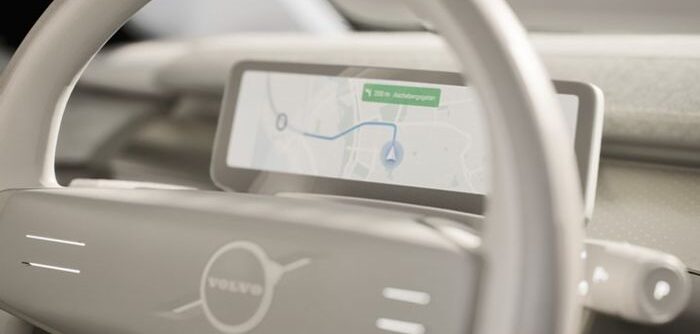Volvo Cars will be the first European manufacturer to deploy Epic Games’ Unreal Engine to provide high-quality graphics for its vehicle displays.
Though best known as a games developer, Epic also develops Unreal Engine, widely considered to be the most advanced real-time 3D creation tool used in various industries beyond games, and which will now be used by Volvo Cars for developing digital interfaces inside its cars and rendering real-time graphics in the car.
Volvo Cars is the first European car maker to use the Unreal Engine for development of the human machine interface (HMI). More specifically, it will initially focus on the Driver Information Module (DIM), one of the displays inside the cabin that provides the driver with relevant information and infotainment features.
“To offer our customers the best possible user experience and contribute to a safe and personal drive, we need rich, immersive and responsive visualization inside our cars,” said Henrik Green, chief product officer at Volvo Cars. “Running Unreal Engine in our cars enables this and makes it even more enjoyable to spend time inside a Volvo.”
Volvo states that by coupling the Unreal Engine with the high-performance computing power of the third-generation Qualcomm Snapdragon Cockpit Platforms, its next generation of cars will set new standards in graphics and infotainment system performance. As a result, the infotainment system will be more than twice as fast as its predecessor, while graphics generation and processing inside the cabin will be up to 10 times faster.
“When you bring interactive, high-resolution graphics running in real time into the car, you open the door to a vast range of new ways to inform and entertain everyone inside,” said Heiko Wenczel, Epic Games’ director of automotive and HMI for Unreal Engine. “Volvo Cars’ deeply talented design and product development teams have grasped this opportunity to do something fresh that will keep evolving with exciting new features that take advantage of the capabilities of Unreal Engine.”
The first car to contain the new graphics is the new, all-electric flagship model that Volvo Cars will reveal later this year. That model is the first of a new generation of all-electric Volvo cars, as the company aims to sell only pure electric cars by 2030.



